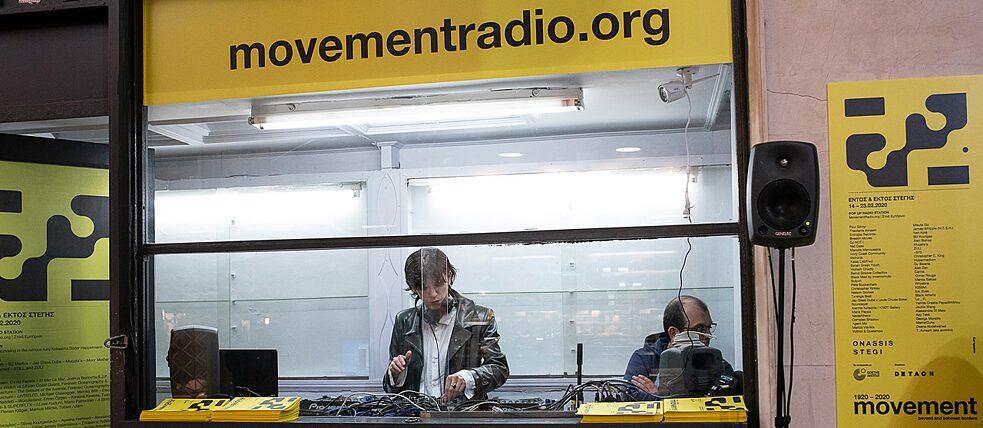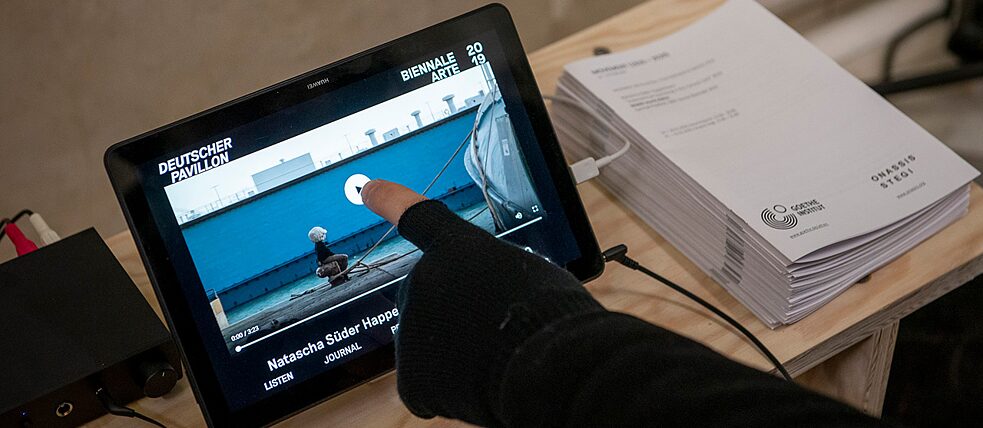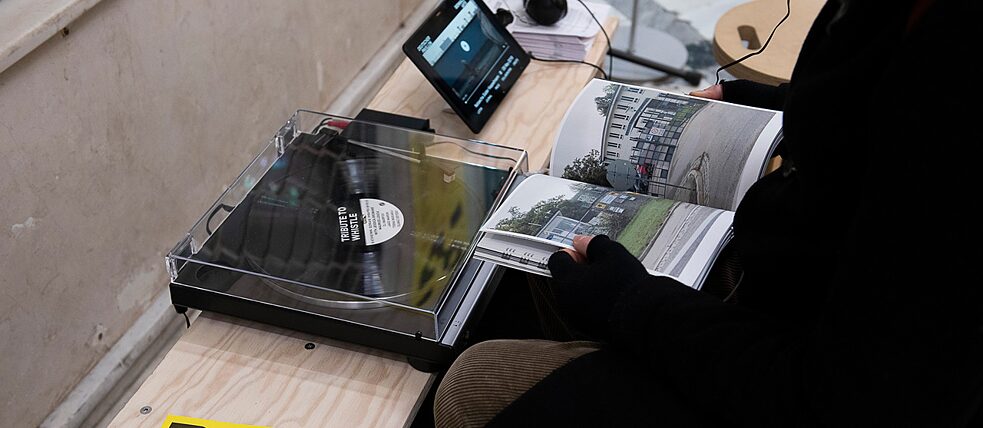“Movement (1920-2020)”
Defending the right to movement

The artist Natascha Sadr Haghighian is known for assuming different identities without revealing her own biography. At the Venice Biennale she worked for the German Pavilion and now presented her work at the festival "Movement (1920-2020)" by Onassis Stegi, in cooperation with the Goethe-Institut Athens. The journalist Despina Zefkili met the artist on behalf of „Goethe aktuell“ and spoke with her about the right to freedom of movement and our responsibility to defend it.
By Despina Zefkili
Your work for the German Pavilion in the last Venice Biennale touched upon the issue of migration. How did you approach it?
My contribution was a result of two simultaneous events. When I was asked to develop a work for the German Pavilion in 2018 I was having some meetings with the curator Franciska Zólyom to discuss it and an event happened. It was a violent police operation in a refugee camp in South Germany. The simultaneity of these two events made me think about me being a “good migrant” asked to represent Germany and others declared as the “bad migrants” and being criminalised. It is almost by accident that I have a German passport. I am invited here by the Goethe Institute, while others, under the Dublin agreement, are deported to where they first entered the EU. The more you learn about the European asylum system, it is important to ask questions about why some bodies are allowed to have mobility and others that are being criminalised for doing the same thing.
 Impressions from the work of Natascha Sadr Haghighian. | Photo (detail): Vangelis Patsialos
Impressions from the work of Natascha Sadr Haghighian. | Photo (detail): Vangelis Patsialos
A space of trust
How did the work evolve?
I started by doing a lot of research about the camps and the organising of refugees in these. From this material we created a publication, and several videos, which connected the camps in Germany to the plantations in the south of Italy, where immigrants work under slave labor conditions and the european politics in the Mediterranean, which criminalise not only migration but the solidarity movements, as well.
Sound is a wonderful medium to have a very somatic experience in space. So we developed a sound installation commissioning six musicians from very different traditions to make a sound piece using only whistles. These were shared in a meta composition where nobody was in full control of the mix. It was about creating a space of trust not controllable from a single place.
 There were many different listening impressions at the festival. | Photo (detail): Vangelis Patsialos
There were many different listening impressions at the festival. | Photo (detail): Vangelis Patsialos
A universal right
What is your contribution to “Movement 1920 – 2020”?
I will show a mobile version of some of the portable material that was presented in Venice; a recording of the sound installation along with videos, photographs and the publication. I find the project really exciting because it doesn't relativise the freedom of movement, but it says it is a universal right.